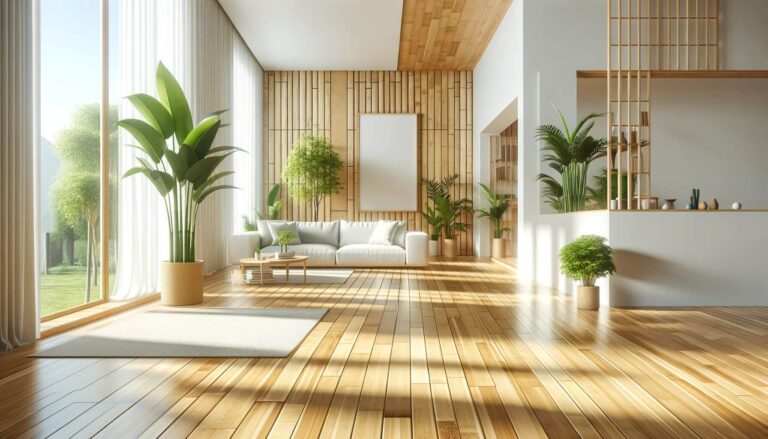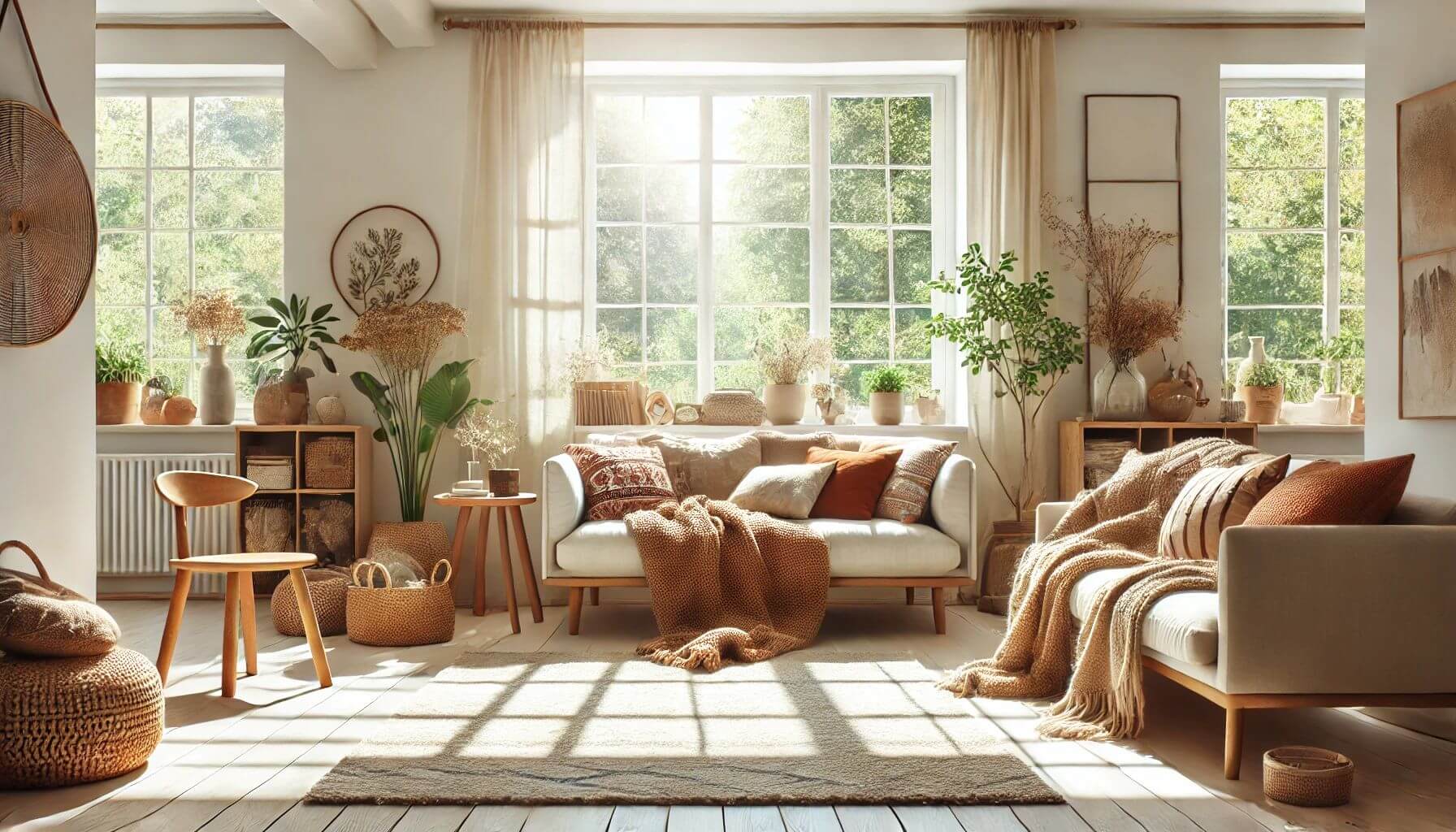
Imagine sinking into a plush armchair, wrapped in a soft blanket, with a steaming mug of cocoa in hand. The gentle flicker of candles casts a warm glow across your living room. This is hygge – the Danish art of coziness and contentment. In this guide, we’ll explore how to infuse your Scandinavian-style living space with this comforting concept, creating a haven of warmth and tranquility in your home.
Understanding hygge
Hygge (pronounced “hoo-ga”) is more than just a design trend. It’s a lifestyle philosophy that emphasizes comfort, contentment, and well-being. Originating in Denmark, hygge has become a global phenomenon, inspiring people to create spaces that nurture the soul and promote a sense of peace.
In a Scandinavian living room, hygge manifests through soft textures, warm lighting, and elements that engage all the senses. It’s about creating an atmosphere that invites relaxation and fosters connection with loved ones. As we delve into the various aspects of hygge, remember that the goal is to create a space that feels authentically cozy to you.
Embracing neutral color palettes
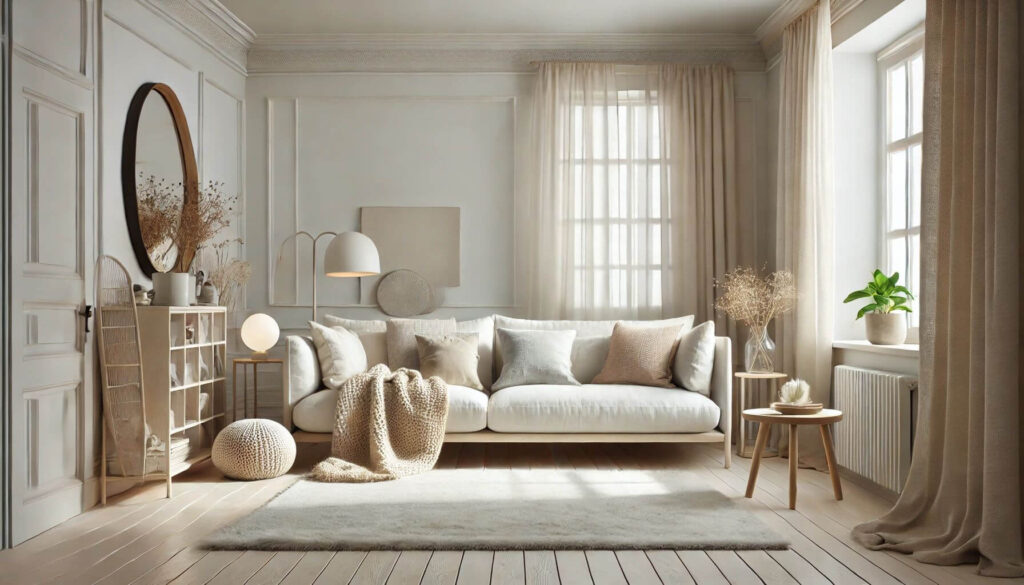
The foundation of a Scandinavian-style living room is a neutral color palette. Think whites, creams, soft grays, and muted earth tones. These colors create a calm, serene backdrop that reflects light and makes the space feel larger and more open.
To add depth and interest to your neutral base, consider incorporating different textures. A chunky knit throw draped over a light-colored sofa, or a plush sheepskin rug on a pale wooden floor, can add visual and tactile warmth to the space. For more ideas on how to work with neutral tones, check out our article on grey kitchen cabinets. While focused on kitchens, many of the principles apply to living spaces as well.
Layering textures for comfort
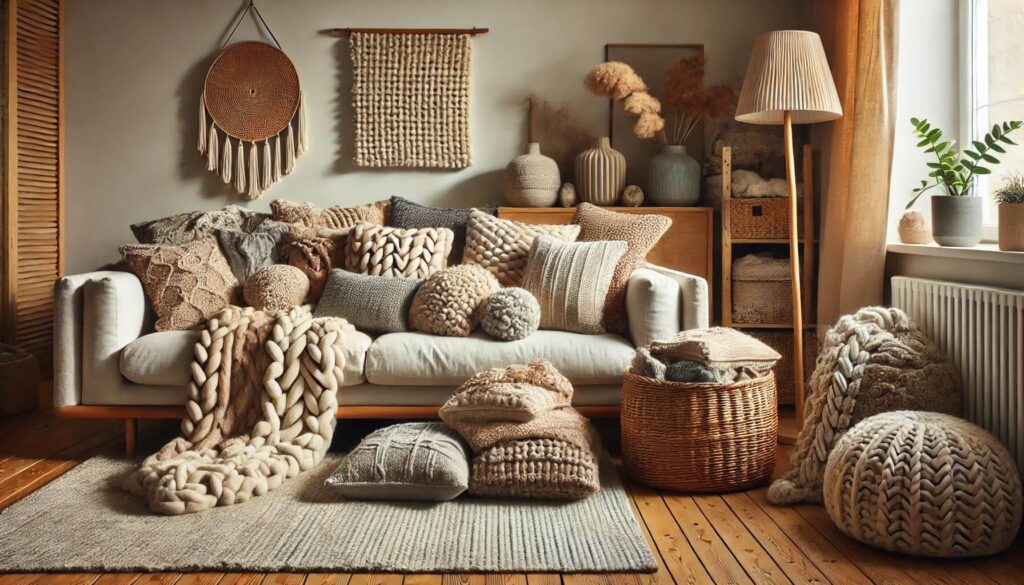
Hygge is all about creating a tactile, inviting environment. Layer different textures throughout your living room to create a sense of coziness and depth. Combine smooth surfaces with rough ones, and soft fabrics with more structured materials.
Consider adding:
- Plush throw pillows in various sizes and fabrics
- Soft, chunky knit blankets
- A thick, high-pile rug
- Woven baskets for storage and texture
- Wooden elements for a natural touch
These layers of texture not only add visual interest but also create a space that begs to be touched and enjoyed. For more ideas on incorporating natural textures, take a look at our guide on charm of indoor rattan furniture.
Lighting for ambiance
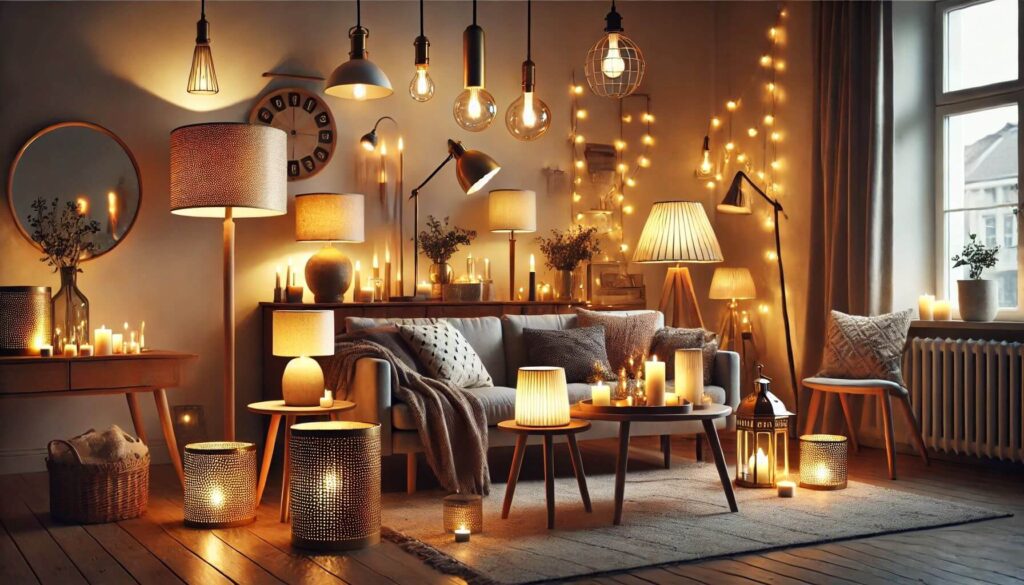
Lighting plays a crucial role in creating a hygge atmosphere. Soft, warm lighting is key to creating a cozy and inviting space. Avoid harsh overhead lights in favor of multiple sources of gentle illumination.
Consider these lighting options:
- Table lamps with warm-toned bulbs
- Floor lamps for reading nooks
- String lights for a magical touch
- Candles for that quintessential hygge glow
Candles, in particular, are essential to hygge. Their flickering light creates a soothing ambiance that can’t be replicated by electric lights. For more lighting inspiration, check out our article on design Mediterranean lighting. While Mediterranean style differs from Scandinavian, many of the principles of creating a warm, inviting atmosphere through lighting apply to both.
Incorporating natural elements
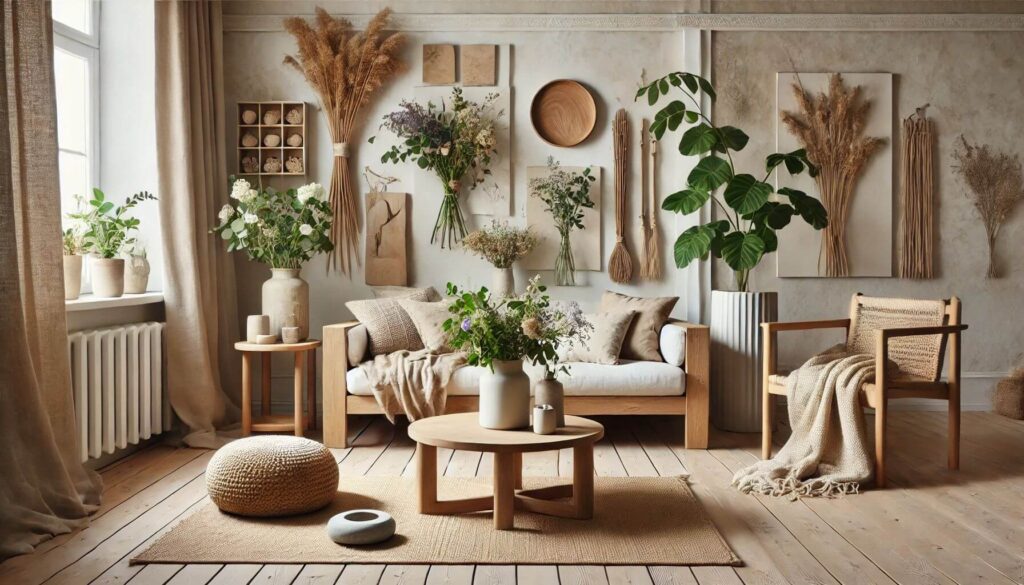
Bringing elements of nature into your living space is a key aspect of both Scandinavian design and hygge philosophy. Natural materials like wood, stone, and plants help to create a sense of connection with the outdoors, even when you’re cozy inside.
Consider adding:
- Wooden furniture or accents
- Potted plants or fresh flowers
- Natural fiber textiles like linen or wool
- Stone or ceramic decorative elements
These natural elements not only add visual interest but also help to create a calming, grounded atmosphere in your living space. For more ideas on incorporating plants into your decor, take a look at our guide on plants for contemporary landscape.
Creating cozy nooks
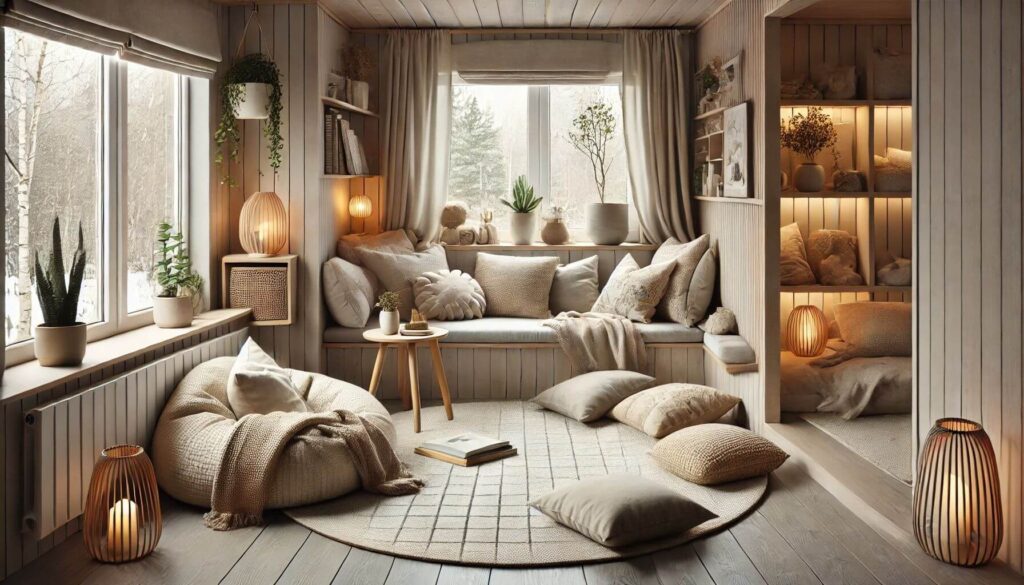
One of the joys of a hygge-inspired space is having dedicated areas for relaxation and comfort. Create cozy nooks within your living room where you can curl up with a good book or enjoy a quiet moment of reflection.
Ideas for cozy nooks include:
- A window seat piled with cushions
- A reading corner with a comfortable armchair and good lighting
- A small meditation area with floor cushions and calming decor
These spaces within your larger living area provide opportunities for moments of peace and self-care. For more inspiration on creating cozy spaces, check out our article on create a cozy reading nook.
Minimalism with personality
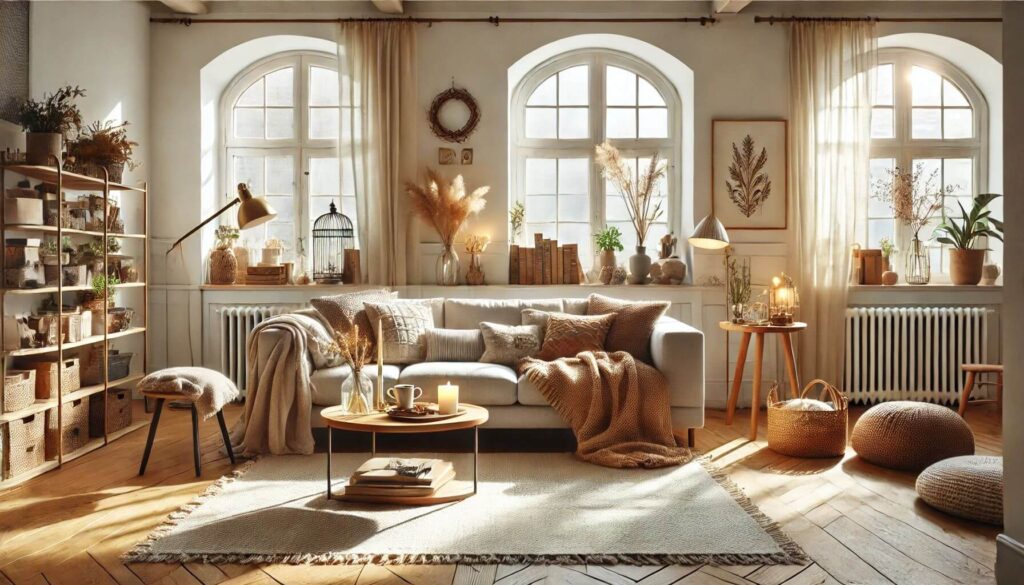
While Scandinavian design often leans towards minimalism, hygge encourages the inclusion of personal touches that make a space feel lived-in and loved. Strike a balance between clean lines and personal warmth.
Consider displaying:
- Family photos in simple frames
- Artwork that speaks to you
- Handmade or heirloom items
- Books that inspire you
These personal elements should be curated carefully to avoid clutter, which can detract from the calm hygge atmosphere. For more ideas on balancing minimalism with personality, take a look at our guide on design inspiration for modern patios. While focused on outdoor spaces, many of the principles can be applied to interior design as well.
Comfort-focused furniture
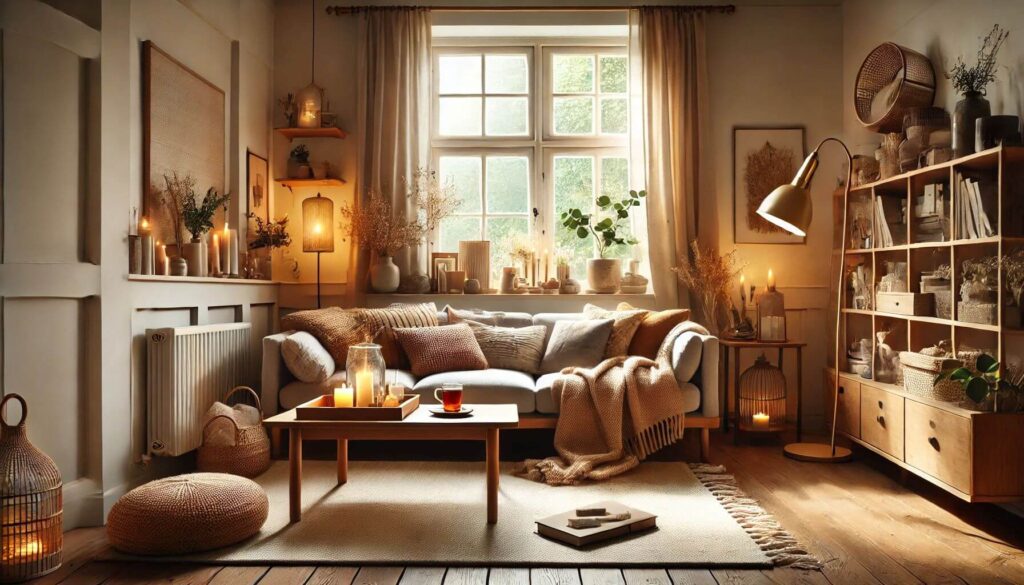
The furniture in a hygge-inspired Scandinavian living room should prioritize comfort above all else. Look for pieces with clean lines that invite relaxation and lounging.
Key pieces might include:
- A plush, oversized sofa
- Comfortable armchairs with high backs
- Soft ottomans or poufs for extra seating or footrests
- A coffee table at the perfect height for putting your feet up
Remember, the goal is to create a space where you can truly relax and unwind. For more ideas on selecting comfortable outdoor furniture (which can often be adapted for indoor use), check out our article on patio furniture for heavy people.
Embracing simplicity
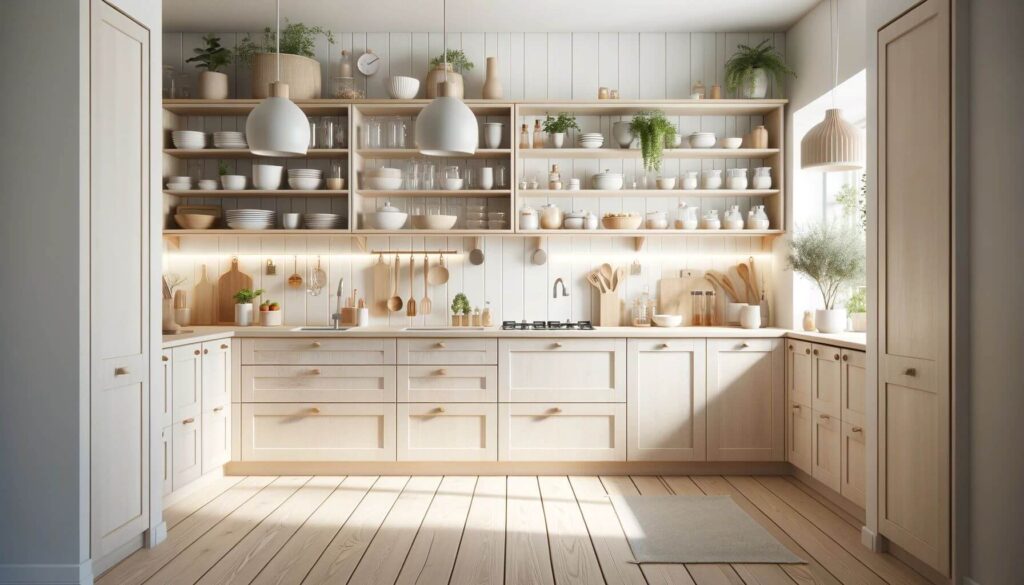
In the spirit of Scandinavian design, embrace simplicity in your hygge-inspired living room. This doesn’t mean your space should feel stark or uninviting. Rather, it’s about carefully selecting each element to serve a purpose, whether functional or emotional.
Consider:
- Decluttering regularly to maintain a sense of calm
- Choosing multi-functional furniture pieces
- Opting for quality over quantity in your decor choices
- Creating open spaces that allow for easy movement and flow
This simplicity allows the cozy, hygge elements of your space to truly shine. For more ideas on creating simple yet inviting spaces, take a look at our guide on scandinavian design.
Incorporating warmth through textiles

Textiles play a crucial role in creating a hygge atmosphere. They add warmth, both visually and physically, and contribute to the overall sense of comfort in your living space.
Consider incorporating:
- Thick, cozy throw blankets
- Soft, plush area rugs
- Cushions and pillows in various textures
- Heavy curtains for added insulation and coziness
When selecting textiles, opt for natural fibers like wool, cotton, and linen. These materials not only look and feel great but also contribute to a healthier indoor environment. For more ideas on using textiles in your decor, check out our article on bohemian outdoor wall decor. While focused on outdoor spaces, many of the textile principles can be applied indoors as well.
Creating a focal point in your scandinavian living space
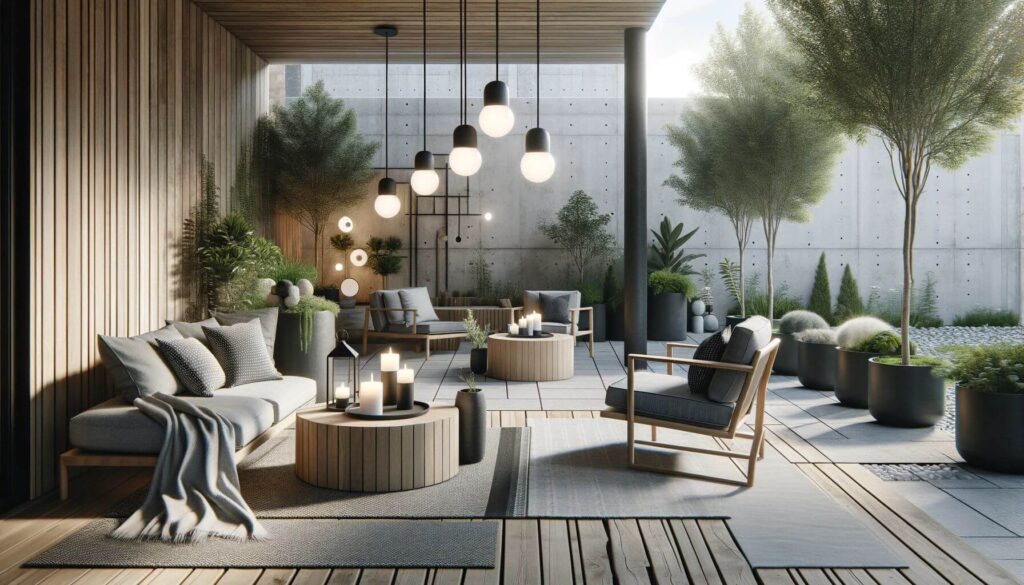
Every cozy living room needs a focal point – a place where the eye is naturally drawn and where people tend to gather. In a hygge-inspired Scandinavian living room, this focal point often centers around the idea of warmth.
Consider making your focal point:
- A fireplace with a beautifully designed mantel
- A large window with a stunning view, framed by cozy seating
- A statement piece of art that evokes feelings of comfort and contentment
If you’re lucky enough to have a fireplace, make the most of it in your hygge design. For ideas on how to style your fireplace area, take a look at our guide on create cozy fireplace decor.
Engaging all the senses

Hygge is about creating a multi-sensory experience that envelops you in comfort. While we’ve focused a lot on visual and tactile elements, don’t forget about the other senses.
Consider incorporating:
- Scented candles or essential oil diffusers for a pleasant aroma
- A small indoor fountain for soothing water sounds
- Soft background music to set the mood
- Textured elements that invite touch, like a fuzzy throw pillow or a smooth wooden bowl
By engaging all the senses, you create a fully immersive hygge experience in your living space. For more ideas on creating a multi-sensory outdoor space (which can be adapted for indoors), check out our article on design a desert oasis.
Cozy Corners Your Scandinavian Living Space
Creating a hygge-inspired Scandinavian living space is about more than just following a set of design rules. It’s about crafting an environment that nurtures your well-being and invites moments of peace and contentment. By incorporating elements of comfort, warmth, and personality, you can transform your living room into a cozy haven that truly feels like home.
Remember, the true essence of hygge lies not in perfection, but in creating a space that feels authentically comfortable to you. So pour yourself a warm drink, light a candle, and sink into your favorite chair. Welcome to your very own hygge haven.
For more inspiration on creating inviting living spaces, be sure to explore our other articles on home interior design trends and fireplace design. Your journey to a cozier, more contented living space starts here.



